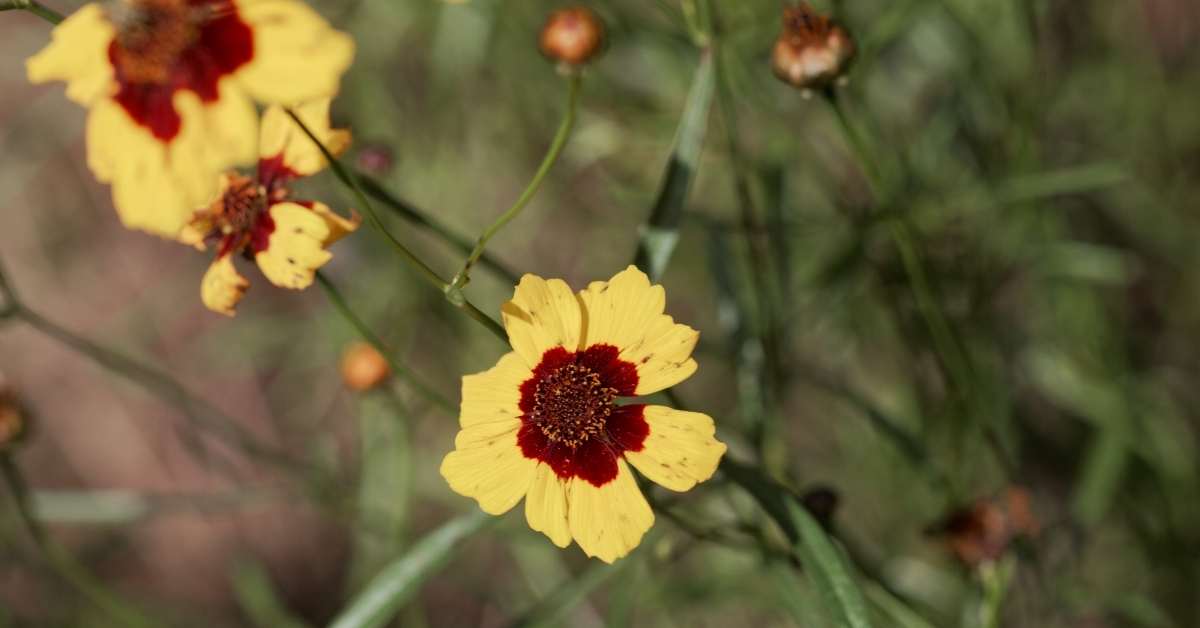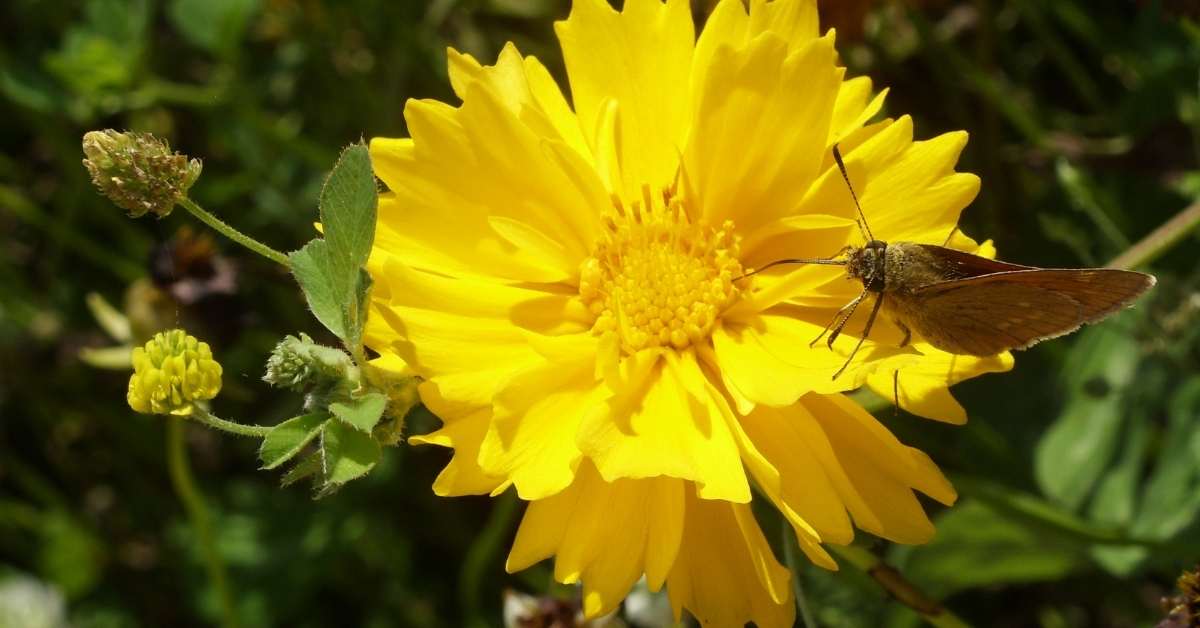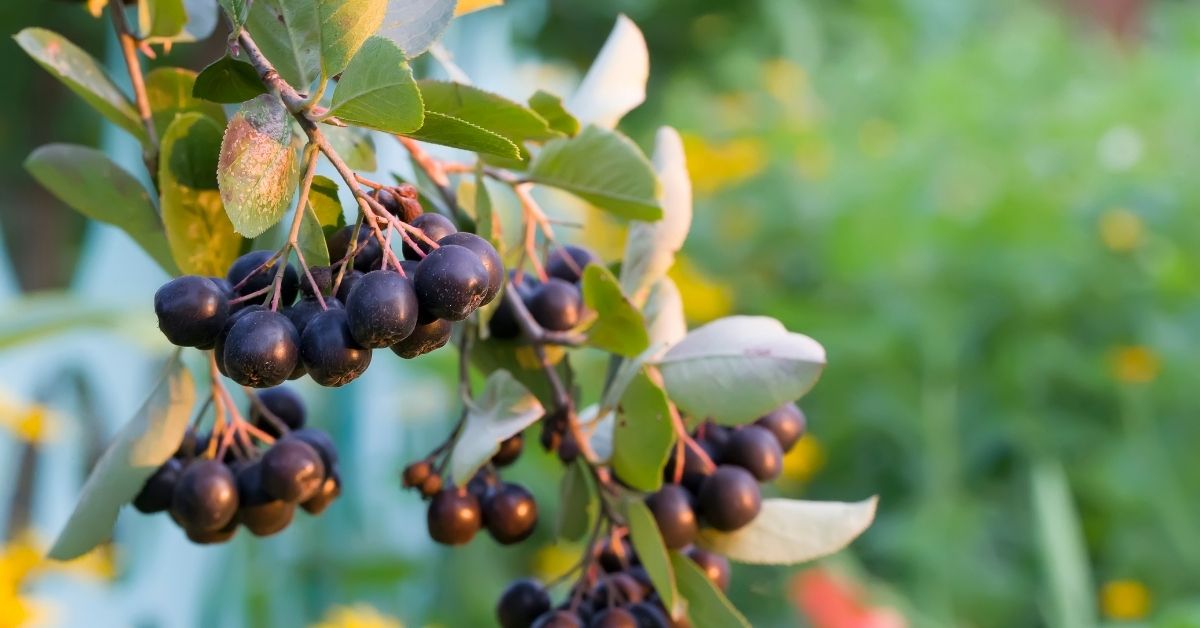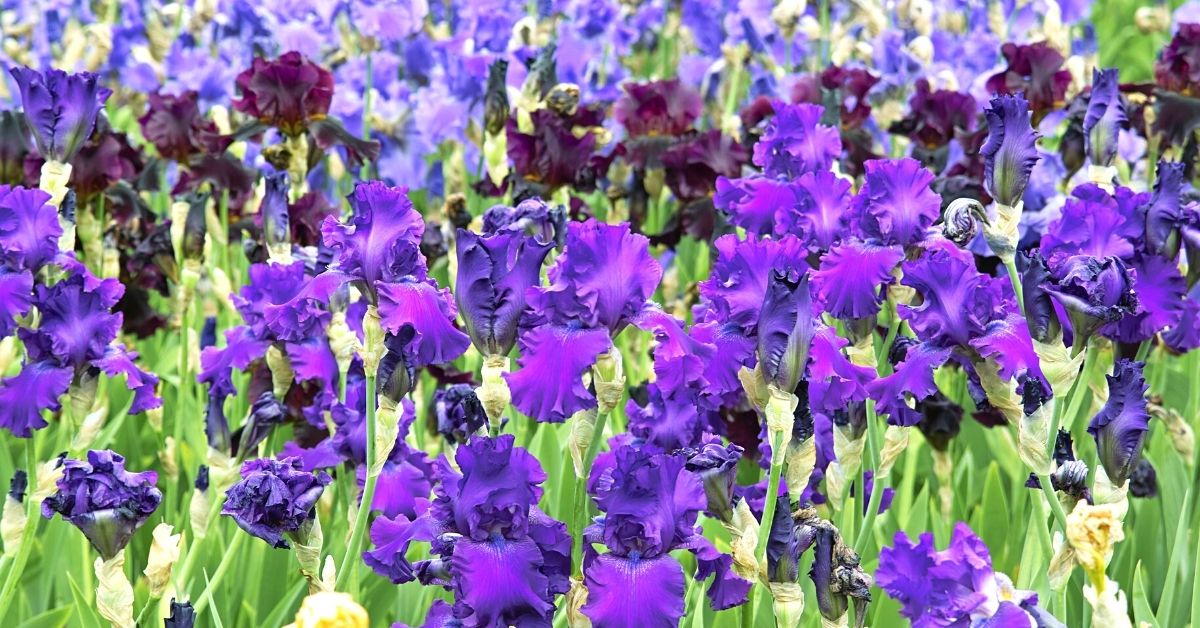We have to start somewhere else, when we intend to talk about (Coreopsis auriculata Charlize – Butter Daisies – calliopsis and tickseed)… Here is how to plant Coreopsis, AKA, Butter Daisies.
Lewis Carroll, in his famous book Through the Looking Glass, had the Walrus give that famous line, “The time has come,” the Walrus said, “To talk of many things:” and he went on to list a few of those things, but he finished his list with “A loaf of bread,” the Walrus said, “Is what we chiefly need.”
In response to this demand for bread, the carpenter in this wonderful piece responds with (we’re getting to the point here), “The butter’s spread too thick!” I was reminded of this literary duel this morning as I worked in the garden around the Coreopsis or butter daisies and thought that I might have to divide them as they were getting a bit thick on the ground.
You might want to see this: The Benefits of Rose Shrubs
These cheerful yellow daisies are coming into their prime in my garden and giving me a great show. Coreopsis is certainly worth searching out if you need a perennial with a long blooming season and foolproof nature.
While there are approximately 80 species of Coreopsis native to North and South America, only a handful are earning their keep in garden cultivation.
How to Plant Coreopsis
The annual Coreopsis is C. tinctoria, and in a full sun garden, it can reach three to four feet in height. Quickly grown as a hardy annual (you can sow it outside), this showy yellow and dark red daisy puts on quite a flower display.

Deadhead Coreopsis
If the gardener deadheads or shears the plant vigorously, a second bloom can be encouraged. It is readily available in seed catalogs; and, you’ll get a better plant starting it in the ground in your garden than you will if purchased from a garden center. So, do coreopsis need to be deadheaded? I definitely think yes!
The plant grows too quickly to make a good pack or pot plant, and the stress invariably put on it lessens its garden performance.
C. Grandiflora is the common Butter daisy found in many garden centers. Quickly grown from seed and only living in the garden for a few years, this plant is a friend of the low-priced perennial grower.
If started in January or February, it will easily bloom the first year in the garden. (A good thing too because it will often die after the first year if the garden is too fertile) This is another plant that a determined gardener can easily start.
How big do coreopsis get?
Seed or plants of varieties such as ‘Badengold’ a deep yellow and three feet tall, ‘Early Sunrise’ eighteen inches, semi-double and light gold, ‘Mayfield Giant’ a three-footer with one and a half inch, bright yellow single blooms will be easily found in catalogs or garden centers.
Seed started as late as March 15 will easily bloom in the first garden year. Seed tucked away in the garden for starting will likely bloom in the second year.
Another of the easily grown but short-lived forms is C. lanceolata. Look for varieties such as ‘Baby Gold,’ a good short heavy flowering form, ‘Baby Sun’ another short, yellow bloomer, ‘Brown Eyes’ with its darker flower center, ‘Double Sunburst’ a semi-double, pure yellow with medium-sized blossoms, and ‘Sunburst’ a full double yellow.
Both the Coreopsis Grandiflora and Coreopsis lanceolata are long-season bloomers if the spent flowers are regularly removed throughout the growing season.

Is coreopsis a perennial?
Yes. To really enjoy this family, it is essential to put two other species into your garden. The first is C. rosea. As you might imagine from the name “rosea,” the flowers on this species are pink. Blooming from the end of June until the beginning or middle of September, this eighteen-inch tall perennial will win a place in your garden heart.
Extremely hardy and very long-lived, this is a perfect plant for the front of a very sunny border. I experimented two years ago and put one into a part-shade garden – took it out this spring as it never bloomed. It prefers regular soil and will not grow particularly well on heavy clay.
Coreopsis ‘Limerock Ruby’ is a delightful another variety of Coreopsis that is well worth growing even though it is quite tender (likely zone 7).
The second excellent species is Coreopsis verticillata, the Threadleaf Butterdaisy. The leaves on this species are much thinner than other forms, and it shares the long season bloom of C. rosea as well as its hardiness and ease of care.
Varieties to look for include ‘Moonbeam’ a very soft, pale yellow; ‘Zagreb’ a golden yellow with a slightly larger flower and ‘Golden Showers,’ a bright, mid-yellow bloomer.
All of the Butter daisies make excellent cut flowers, although the flowers of C. rosea and C. verticillata are only three-quarters of an inch across. I note when you have hundreds of blooms on a single plant – bloom size is irrelevant in the garden.
Taking cuttings
While both C. rosea and C. verticillata do set seeds in the garden, I’ve never had any luck starting them from seed. Instead, I propagate them by division or by taking cuttings. They are one of the few plants that will root from a flowering cutting, so cuttings can be taken anytime the stem is soft.
The Carpenter and I might be talking about two different things here, but I can assure you, the Butter is not spread too thick on my garden. The more, the merrier, and the nice thing about this golden Butter is its total lack of calories.

